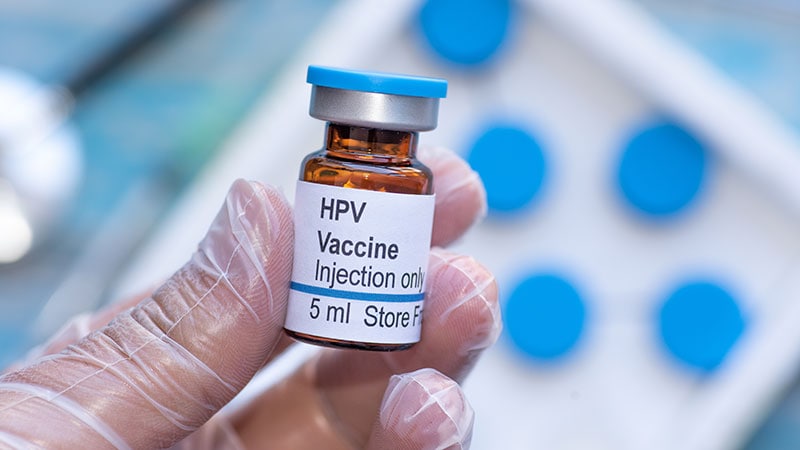Large-Scale Study Finds HPV Vaccination Significantly Reduces Cancer Risk in Both Men and Women
Core Concepts
HPV vaccination is highly effective in preventing not only cervical cancer, but also other HPV-related cancers such as head and neck cancers in both men and women.
Abstract
This study, presented at the American Society of Clinical Oncology (ASCO) 2024 annual meeting, analyzed a large dataset from the US TriNetX database to evaluate the impact of HPV vaccination on cancer risk. The key findings include:
HPV-vaccinated men had a 54% lower risk for all HPV-related cancers and a 56% lower risk for head and neck cancers compared to unvaccinated men.
HPV-vaccinated women had a 27% lower risk for all HPV-related cancers, a 54% lower risk for cervical cancer, and a 33% lower risk for head and neck cancers (though this finding was not statistically significant).
Vaccinated women were also less likely to develop precancerous conditions like high-grade squamous intraepithelial lesions and cervical carcinoma in situ.
The study highlights the significant cancer prevention benefits of HPV vaccination, which extends beyond just cervical cancer. However, HPV vaccination rates in the US remain relatively low, with only about 58% of adolescents aged 13-15 receiving the recommended doses. Improving vaccination rates is critical to reducing the burden of HPV-related cancers in the United States.
HPV Vaccine Offers Cancer Protection Beyond Cervical Cancer
Stats
HPV-vaccinated men had a 54% lower risk for all HPV-related cancers (OR, 0.46; P < .001) and a 56% lower risk for head and neck cancers (OR, 0.44; P < .001) than unvaccinated men.
HPV-vaccinated women had a 27% lower risk for all HPV-related cancers (OR, 0.73; P < .05), a 54% lower risk for cervical cancer (OR, 0.46; P < .05), and a 33% lower risk for head and neck cancers (OR, 0.67; 95% CI, 0.42-1.08) than HPV-unvaccinated women.
Vaccinated women were less likely than unvaccinated women to develop high-grade squamous intraepithelial lesions (OR, 0.44), cervical carcinoma in situ (OR, 0.42), abnormal Pap findings (OR, 0.87), and were less likely to undergo cone biopsy and loop electrosurgical excision (OR, 0.45).
Quotes
"We've known for a long time that having the HPV vaccine can prevent the development of HPV infection, yes, but importantly, cancer," primarily cervical cancer.
"HPV vaccination is cancer prevention."
Key Insights Distilled From
by Megan Brooks at www.medscape.com 05-31-2024
https://www.medscape.com/viewarticle/hpv-vaccine-offers-cancer-protection-beyond-cervical-cancer-2024a1000a7y
Deeper Inquiries
What are the potential barriers to increasing HPV vaccination rates in the United States, and what strategies could be implemented to address them?
One of the potential barriers to increasing HPV vaccination rates in the United States is a lack of awareness among the public about the importance of HPV vaccination in preventing various types of cancers. Additionally, there may be misconceptions or hesitancy regarding vaccines in general, which can deter individuals from getting vaccinated. Access to healthcare services and affordability of the vaccine can also be significant barriers for certain populations. To address these barriers, strategies such as increasing education and awareness campaigns about the benefits of HPV vaccination, addressing misinformation through targeted communication efforts, improving access to vaccines in underserved communities, and implementing policies that make the vaccine more affordable and accessible can be effective.
How might the findings of this study impact the recommendations and guidelines for HPV vaccination, particularly for men?
The findings of this study, which show that HPV vaccination significantly reduces the risk of HPV-related cancers, particularly head and neck cancers in men, could lead to a reevaluation of current recommendations and guidelines for HPV vaccination. Specifically, there may be a stronger emphasis on the importance of HPV vaccination for men, highlighting the broader cancer prevention benefits beyond cervical cancer. Healthcare providers may be encouraged to recommend the HPV vaccine to male patients more proactively, and public health authorities may consider expanding vaccination programs to target a wider age range of males. The study's results could potentially lead to updated guidelines that prioritize HPV vaccination for both men and women to maximize cancer prevention efforts.
Given the broader cancer prevention benefits of HPV vaccination, how could this information be effectively communicated to the public to encourage higher uptake?
To effectively communicate the broader cancer prevention benefits of HPV vaccination to the public and encourage higher uptake, a multi-faceted approach is essential. This could include targeted public health campaigns that emphasize the role of HPV vaccination in preventing various types of cancers, not just cervical cancer. Utilizing various communication channels such as social media, community outreach programs, and healthcare provider recommendations can help reach different demographics. Personalizing the message by sharing real-life stories of individuals who have benefited from HPV vaccination can make the information more relatable and impactful. Collaboration with schools, workplaces, and other community organizations to promote vaccination events and provide easy access to vaccines can also help increase uptake. Additionally, addressing concerns and misinformation about the vaccine through transparent and evidence-based communication is crucial in building trust and confidence in HPV vaccination.
0
